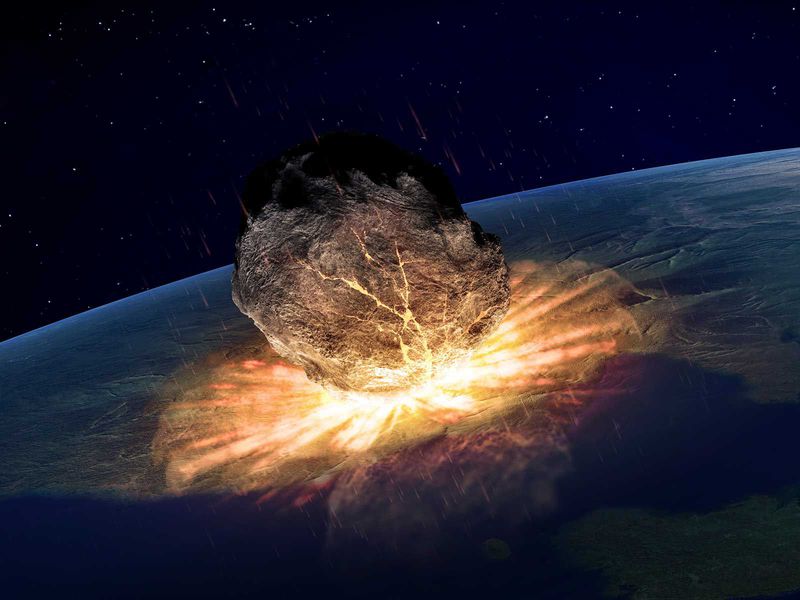Scientists say the Boltysh crater in Ukraine formed well after the impact in Mexico that caused the dinosaurs to go extinct.
The following written content by Shi En Kim
f you travel 140 miles southeast of Kiev, Ukraine, just before you reach the tiny village of Bukvarka, you’ll arrive at a patch of forest that streaks across agricultural lands. The gently sloping meadows and cottages are bucolic, giving no indication of the area’s violent past. But burrow down 1,700 feet or so and you’ll find the remnants of a catastrophic impact: a 15 mile–wide asteroid crater.

Scientists say that about 65 million years ago an asteroid the length of three Eiffel Towers struck here, its fiery fallout blanketing an area the size of present-day Vermont. The impact dumped a colossal amount of heat into the ground—enough to melt rock and form a massive depression called the Boltysh crater, a hole now filled in by asteroid detritus and sediments of a lake long gone.
Previous studies have assigned the Boltysh impact event a broad range of dates to suggest that it may have coincided with the Chicxulub impact event—with the two asteroid strikes both contributing to the extinction of the dinosaurs. Now, a more precise follow-up study published today in Science Advances suggests the Boltysh impact occurred 650,000 years later than the Chicxulub impact, long after the dinosaurs disappeared. Though the Boltysh impact is no longer fingered in the famous mass extinction event, pinpointing the crater’s age has allowed scientists to correlate the asteroid strike to other global shake-ups of its time.

“You’re trying to document a major event that basically, surely shaped the biosphere and changed evolution of the Earth,” says Philippe Claeys, a geologist at the Free University of Brussels, Belgium who didn’t participate in the study. “You will need to understand every event taking place at that moment. Is it important to document an event like Boltysh? Absolutely.”
Annemarie Pickersgill, a geologist at the University of Glasgow, UK who led the research, dated the Boltysh crater by looking at the age of the sediments that had settled on top. These sediments came from the rocks that were melted by the asteroid impact and the soil that had accumulated over the millions of years since. Her team examined the cores drilled from this sedimentary pileup using a dating method that measures the accumulation a particular isotope of argon and estimated the crater’s age to be 65.39 million years.
“This is a really nice study,” says Claeys. “The argon ages are absolutely beautiful.”
Normally, an asteroid the size of Boltysh’s impactor—ten times smaller than the infamous rock that formed Chicxulub—would be too puny to cause damage on a global scale. Nevertheless, the impactor may have triggered a series of unfortunate events because the planet was already in a fragile state.
“A question we posed was, when [Earth] was already stressed, was it possible that a small impact could have pushed things over the edge for a hyperthermal?” says Pickersgill.





